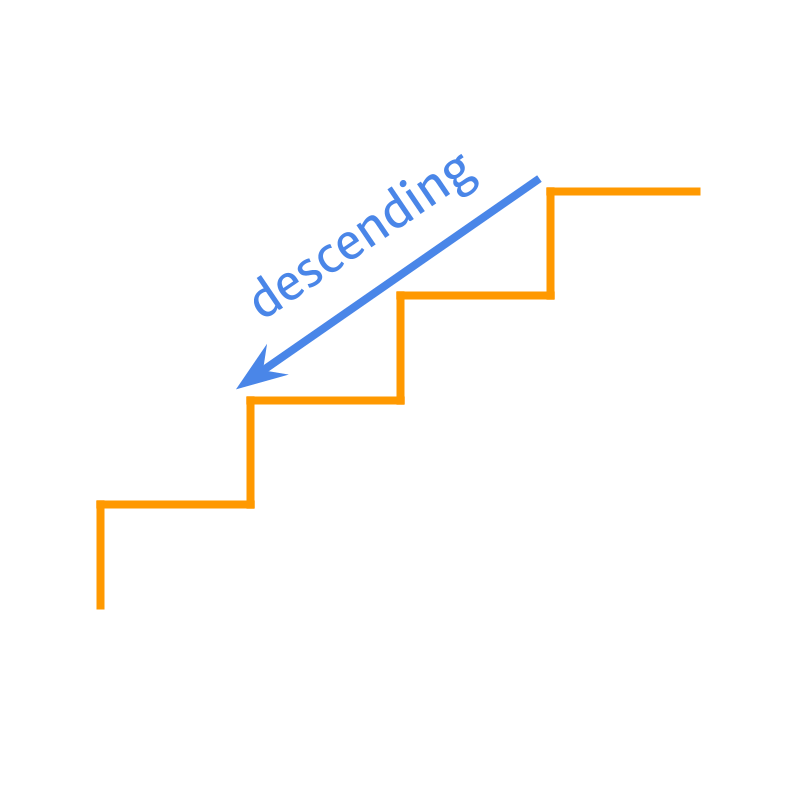
what you'll learn...
overview
This page extends the comparison of integers to arranging three or more numbers in ascending or descending order.
order in many

The ascending order was introduced in whole numbers. Given numbers are arranged from smallest to largest.

The descending order was introduced in whole numbers. Given numbers are arranged from largest to smallest.
Arrange -234−234, 423423, 7373 in ascending order.
The order is -234−234, 7373, 423423.
Arrange 9, 873, -99 in descending order.
The order is 873, 9, -99.
Two or more integers can be compared to arrange them in
• ascending order : from the smallest to the largest
• descending order : from the largest to the smallest
examples
Arrange the numbers in ascending order -8, -843, -84.
The answer is "-843, -84, -8"
Arrange the numbers in descending order -2, 7, -4.
The answer is "7, -2, -4"
Arrange the numbers in descending order 5, -5, 5, -5.
The answer is "5, 5, -5, -5"
Arrange the numbers in ascending order -2, 0, 4.
The answer is "-2,0,4"
summary
More than two numbers can be compared to arrange them in
• ascending order : from smallest to the largest

• descending order : from largest to the smallest
 Example: given numbers 2,7,-4,-6 is arranged in
Example: given numbers 2,7,-4,-6 is arranged in
ascending order : -6,-4,2,7
descending order : 7,2,-4,-6
Outline
The outline of material to learn integers is as follows.
Note: click here for detailed outline of Integers (directed numbers)
→ Introduction to Directed Numbers
→ Handling Direction
→ Ordinal Property
→ Sign and Absolute Value
→ Comparing Integers
→ Predecessor & Successor
→ Largest & Smallest
→ Ascending & Descending
→ Addition: First Principles
→ Addition: Simplified Procedure
→ Subtraction: First Principles
→ Subtraction: Simplified Procedure
→ Multiplication: First Principles
→ Multiplication: Simplified Procedure
→ Division: First Principles
→ Division: Simplfied Procedure
→ Numerical Expressions with Integers
→ PEMA / BOMA